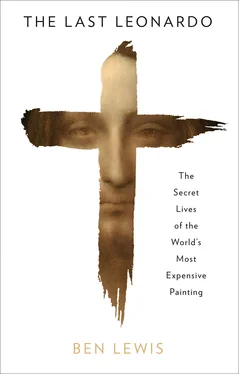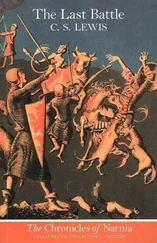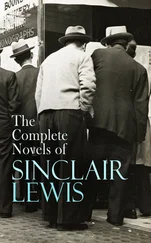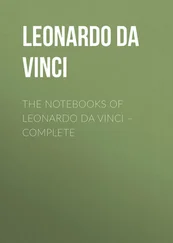1 ...7 8 9 11 12 13 ...18 Kemp picked up the baton from Pedretti. He analysed the notebooks and paintings and evolved a coherent and impressively simple model – ‘a common core’, he called it – for Leonardo’s thinking and a narrative for how it developed. For Kemp, Leonardo’s creativity combined observation, intellect, invention (fantasia) and convention (decorum). Leonardo, said Kemp, set out with the purpose of understanding the mathematical and scientific principles that underlay the natural world, anticipating that there must be a common set of laws that applied to all phenomena:
Those authors who have written that Leonardo began by studying things as an artist but increasingly investigated things for their own sakes have missed the point entirely. What should be said is that he increasingly investigated each thing for each other’s sake, for the sake of the whole and for the sake of the inner unity, which he perceived both intuitively and consciously. In moving from church architecture to anatomy, from harmonic proportions to mechanics, he was not leaping erratically from one separate branch to another, like a frenzied squirrel, but climbing up different branches of the same tree.2
Then, at the end of his life, Kemp argued, Leonardo changed his tune. He became convinced that nature was too diverse and mysterious to be grasped, and this was reflected in his stunningly dynamic series of late drawings of floods and tempests.
In the almost four decades since Marvellous Works , Kemp has published a profusion of scholarly articles and catalogue essays about the intersection of science and art in the work of Leonardo and in the broader Renaissance culture. He has also been active in the less austere world of exhibitions and television documentaries, often involving the reconstruction of a working model based on one of Leonardo’s designs. He has plans for a contemporary dance performance, an orchestral recital and a CD of music related to Leonardo, while he works on a new scholarly edition of one of Leonardo’s scientific notebooks, the Leicester Codex , owned by Bill Gates. He is Mr Leonardo. The intellectual has become in part impresario, and scholarship has merged with showmanship, a trend that can be observed across the entire art historical and museological community in recent times.
Martin Kemp had long been an outspoken critic of the methodology of connoisseurship and attributions in art history. In a lecture in The Hague he said, ‘The state of methods and protocols used in attribution is a professional disgrace. Different kinds of evidence, documentation, provenance, surrounding circumstances of contexts of varied kinds, scientific analysis, and judgement by eye are used and ignored opportunistically in ways that suit each advocate (who too frequently has undeclared interests).’13 He has warned that commercial incentives and professional networks often trump scholarly reserve: ‘In extreme cases, curators of exhibitions might fix catalogue entries in the service of loans; museum directors and boards might bend their own rules.’4 To his credit, Kemp has long refused to accept a fee, or even expenses, if he inspects a work of art (although some might point out that there are many other incentives, besides direct financial gain, to discover a long-lost work by the world’s most famous artist). ‘As soon as you get entangled with any financial interest or advantage, there is a taint, like a tobacco company paying an expert to say cigarettes are not dangerous,’ he told the New Yorker magazine.5
Like many other Leonardists, Martin Kemp has been receiving scores of emails for years, ‘sometimes more than one a week’,6 he says, from individuals who think they own an unrecognised Leonardo. Some of these works are by Leonardo’s pupils, others are incompetent copies, and many have nothing to do with the artist. Most of the time he rejects the invitations to view the works; sometimes he can see from the images he is sent that the work is not a Leonardo. He knows that attributions are a murky business, and he has kept his distance. He says that he does not attribute works of art – he researches them. Back in Marvellous Works he wrote that ‘The speculative attribution of unknown or relatively unknown works to major masters is a graveyard for historians’ reputations.’7
But, as often as Professor Kemp has warned of the dangers of attribution, he is as human as any other Leonardist. For all his caveats about connoisseurship, he still finds it useful to deploy the mysterious and instantaneous power of the eye of the art historian: ‘The actual physical presence of a work of art is always very different from even the best photographic images … The first moments are always edgy. If a certain zing does not occur, the encounter is going to be hard going.’ Sooner or later, all the great Leonardo experts have been lured into the vortexes of authentication. That may be because no mortal, whether scholar or not, can hold out forever against the allure of beauty, money and fame. Or it may be because, over a long and distinguished career, it is impossible to avoid every patch of academic quicksand.
In March 2008, Kemp received an email with a jpeg file of a small drawing on parchment, 23 x 33cm. It was of a pretty young woman in profile, with piercing green-brown eyes and a delicate upturned nose. Her hair was swept back into an elaborate hairpiece, and there was a knotwork pattern on the sleeve of her garment, which was curiously plain and cheap. The picture had been bought at auction in 1998 for under $20,000 as a nineteenth-century work by a German artist, one of a circle which had been reviving and imitating Italian Renaissance painters.
Kemp thought it ‘zinged decisively’. He authenticated it as a Leonardo and named it La Bella Principessa , although there was no evidence that it was of a princess. Eventually he published a book about the painting, which he said depicted a bride, Bianca Sforza from the ruling family of Milan, for whom Leonardo worked, and that it came from a late-fifteenth-century bound vellum book in a Warsaw library which commemorated the wedding. He observed Leonardo’s hand in the left-handed cross-hatching, the glassy pupils and traces of fingerprints. ‘Leonardo has evoked the sitter’s living presence with an uncanny sense of vitality,’ he said.8 However, Leonardo had never done any other drawing on vellum; nor is there any document naming the sitter. The only scrap of supporting evidence Kemp could find for the choice of medium was a note Leonardo had once written asking a French court painter about this technique:
Get from Jean de Paris the method of dry colouring and the method of white salt, and how to make coated sheets; single and many doubles; and his box of colours.
Kemp observed that there were tiny holes in the side of the drawing which showed that it had once been bound into the Warsaw book. But the holes were in the wrong places, there weren’t enough of them, and the type of vellum was not the same as that in the book. In addition to that, the Bella Principessa was wearing a costume that was too dowdy for a wedding, and a strange slit in her sleeve was inexplicable.* To add to the case against, the drawing’s owner claimed to the Sunday Times that he had found the picture in a drawer at a friend’s house in Switzerland.9 The Italian art historian Mina Gregori agreed with Kemp about the attribution, but most other Renaissance art historians reacted with doubt, or worse, derision. Kemp and the painting’s private owner, Peter Silverman, wanted it to be exhibited in a major public institution, and allowed the Kunsthistorisches Museum in Vienna to examine the painting in its labs, with a view to showing it, but the museum director reported back that he didn’t think the work was genuine.
Читать дальше












